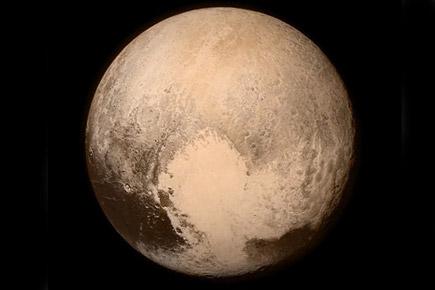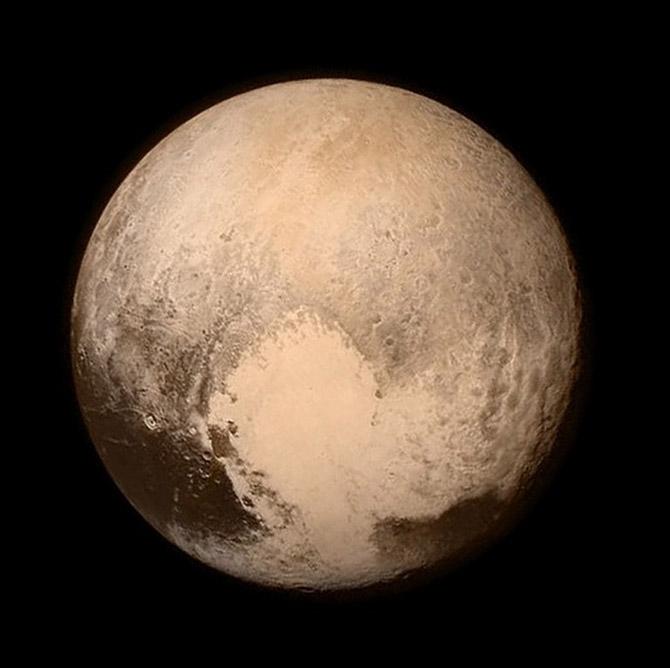NASA's New Horizons spacecraft got humanity's first up-close look at Pluto, sending word of its triumph across 3 billion miles to scientists waiting breathlessly back home

Pluto high definition image
Cape Canaveral: NASA's New Horizons spacecraft got humanity's first up-close look at Pluto, sending word of its triumph across 3 billion miles to scientists waiting breathlessly back home.

This photo obtained July 14, 2015 from NASA shows New Horizons' look at Pluto's Charon-facing hemisphere. Pic/AFP
ADVERTISEMENT
Confirmation of mission success came 13 hours after the actual flyby and, after a day of both jubilation and tension, allowed the New Horizons team to finally celebrate in full force.
Early indications had been encouraging, and a cheering, flag-waving celebration swept over the mission operations center in Maryland at the time of closest approach yesterday morning.
But until New Horizons phoned home last night, there was no guarantee the spacecraft had buzzed the small, icy, faraway, but no longer unknown world. The unprecedented encounter was the last stop on NASA's grand tour of the planets over the past half-century. New Horizons' journey began 9½ years ago, back when Pluto was still considered a full-fledged planet.
"This is truly a hallmark in human history," said John Grunsfeld, NASA's science mission chief. "It's been an incredible voyage." According to NASA, the spacecraft the size of a baby grand piano swept to within 7,700 miles of Pluto at 31,000 mph. It was programmed to then go past the dwarf planet and begin studying its far side.
To commemorate the moment of closest approach, scientists released the best picture yet of Pluto, taken on the eve of the flyby. Even better images will start "raining" down on Earth beginning today, promised principal scientist Alan Stern. But he had cautioned everyone to "stay tuned" until New Horizons contacted home.
It takes 4-1/2 hours for signals to travel one-way between New Horizons and Earth. The message went out late in the afternoon during a brief break in the spacecraft's data-gathering frenzy. The New Horizons team kept up a confirmation countdown, noting via Twitter when the signal should have passed the halfway point, then Jupiter's orbit. The uncertainty added to the drama. "This is true exploration," cautioned Stern, a Southwest Research Institute planetary scientist. "New Horizons is flying into the unknown."
Among the possible dangers: cosmic debris that could destroy the mission. But with the chances of a problem considered extremely low, scientists and hundreds of others assembled at Johns Hopkins University's Applied Physics Laboratory erupted in jubilation when the moment of closest approach occurred at 7:49 am EDT. The lab is the spacecraft's developer and manager.
 Subscribe today by clicking the link and stay updated with the latest news!" Click here!
Subscribe today by clicking the link and stay updated with the latest news!" Click here!







